Dimitrios Giannakis
Kernel Analog Forecasting: Multiscale Test Problems
May 13, 2020
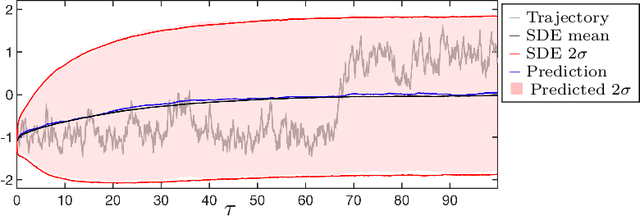
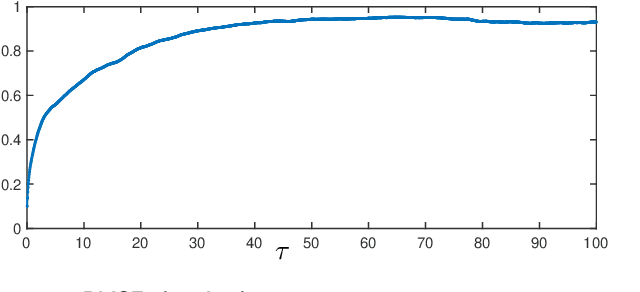
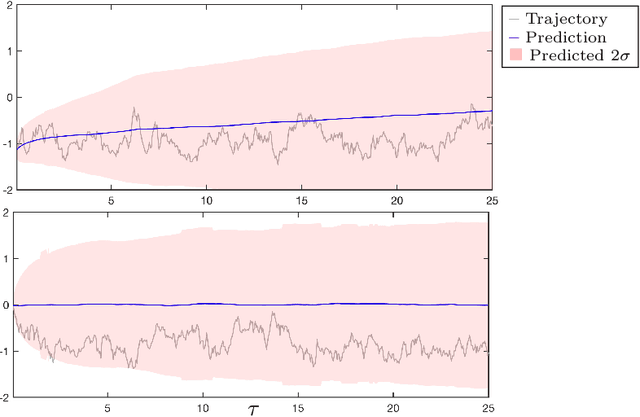
Abstract:Data-driven prediction is becoming increasingly widespread as the volume of data available grows and as algorithmic development matches this growth. The nature of the predictions made, and the manner in which they should be interpreted, depends crucially on the extent to which the variables chosen for prediction are Markovian, or approximately Markovian. Multiscale systems provide a framework in which this issue can be analyzed. In this work kernel analog forecasting methods are studied from the perspective of data generated by multiscale dynamical systems. The problems chosen exhibit a variety of different Markovian closures, using both averaging and homogenization; furthermore, settings where scale-separation is not present and the predicted variables are non-Markovian, are also considered. The studies provide guidance for the interpretation of data-driven prediction methods when used in practice.
An information-geometric approach to feature extraction and moment reconstruction in dynamical systems
Apr 05, 2020

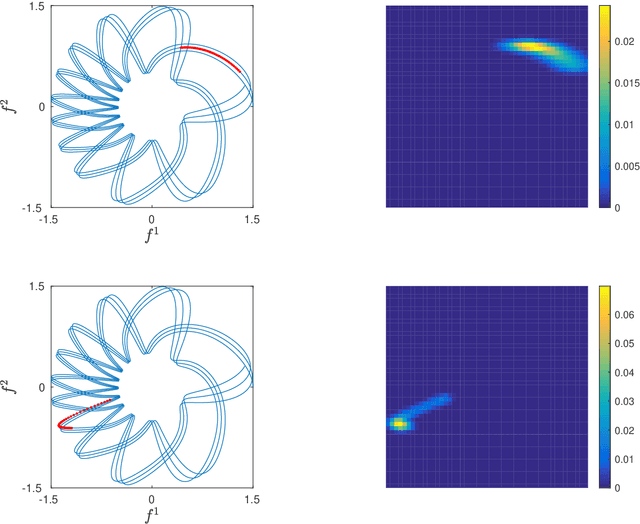
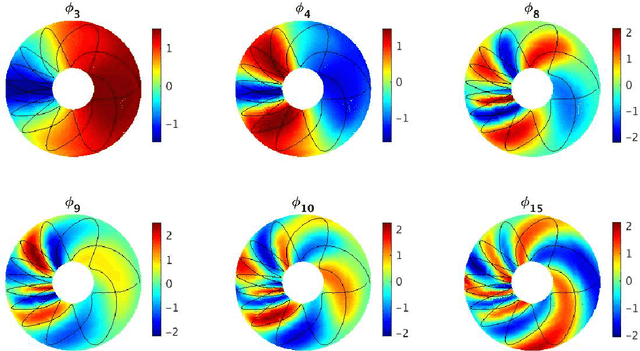
Abstract:We propose a dimension reduction framework for feature extraction and moment reconstruction in dynamical systems that operates on spaces of probability measures induced by observables of the system rather than directly in the original data space of the observables themselves as in more conventional methods. Our approach is based on the fact that orbits of a dynamical system induce probability measures over the measurable space defined by (partial) observations of the system. We equip the space of these probability measures with a divergence, i.e., a distance between probability distributions, and use this divergence to define a kernel integral operator. The eigenfunctions of this operator create an orthonormal basis of functions that capture different timescales of the dynamical system. One of our main results shows that the evolution of the moments of the dynamics-dependent probability measures can be related to a time-averaging operator on the original dynamical system. Using this result, we show that the moments can be expanded in the eigenfunction basis, thus opening up the avenue for nonparametric forecasting of the moments. If the collection of probability measures is itself a manifold, we can in addition equip the statistical manifold with the Riemannian metric and use techniques from information geometry. We present applications to ergodic dynamical systems on the 2-torus and the Lorenz 63 system, and show on a real-world example that a small number of eigenvectors is sufficient to reconstruct the moments (here the first four moments) of an atmospheric time series, i.e., the realtime multivariate Madden-Julian oscillation index.
Nonlinear Laplacian spectral analysis: Capturing intermittent and low-frequency spatiotemporal patterns in high-dimensional data
Jul 17, 2012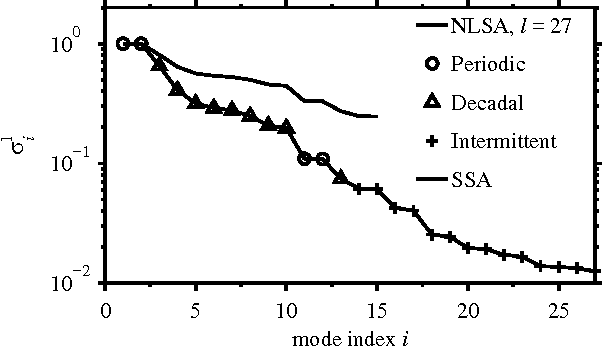
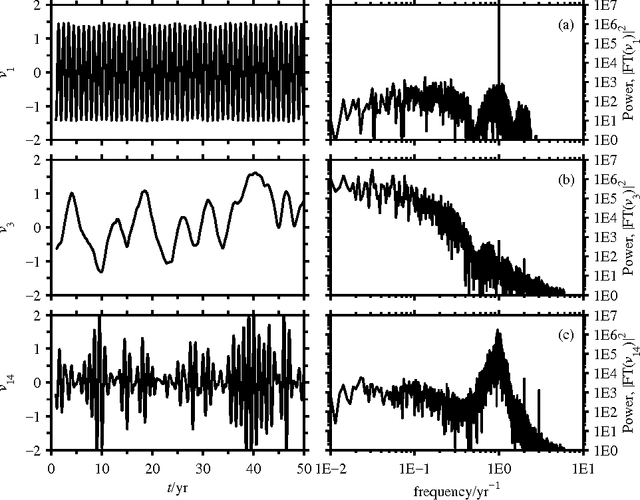
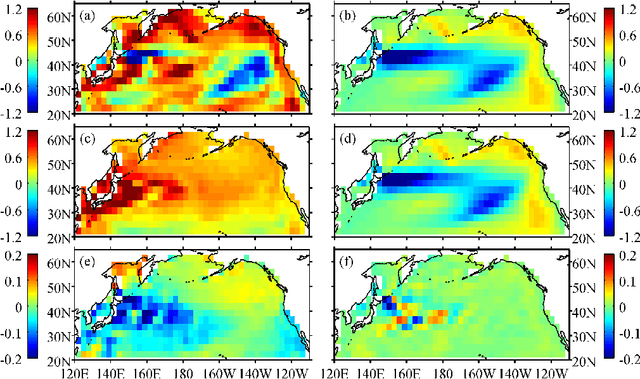
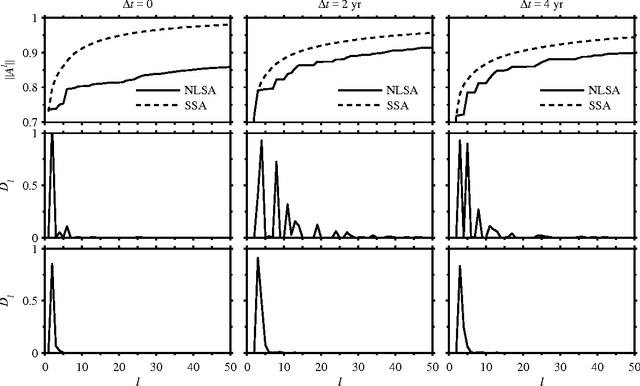
Abstract:We present a technique for spatiotemporal data analysis called nonlinear Laplacian spectral analysis (NLSA), which generalizes singular spectrum analysis (SSA) to take into account the nonlinear manifold structure of complex data sets. The key principle underlying NLSA is that the functions used to represent temporal patterns should exhibit a degree of smoothness on the nonlinear data manifold M; a constraint absent from classical SSA. NLSA enforces such a notion of smoothness by requiring that temporal patterns belong in low-dimensional Hilbert spaces V_l spanned by the leading l Laplace-Beltrami eigenfunctions on M. These eigenfunctions can be evaluated efficiently in high ambient-space dimensions using sparse graph-theoretic algorithms. Moreover, they provide orthonormal bases to expand a family of linear maps, whose singular value decomposition leads to sets of spatiotemporal patterns at progressively finer resolution on the data manifold. The Riemannian measure of M and an adaptive graph kernel width enhances the capability of NLSA to detect important nonlinear processes, including intermittency and rare events. The minimum dimension of V_l required to capture these features while avoiding overfitting is estimated here using spectral entropy criteria.
 Add to Chrome
Add to Chrome Add to Firefox
Add to Firefox Add to Edge
Add to Edge